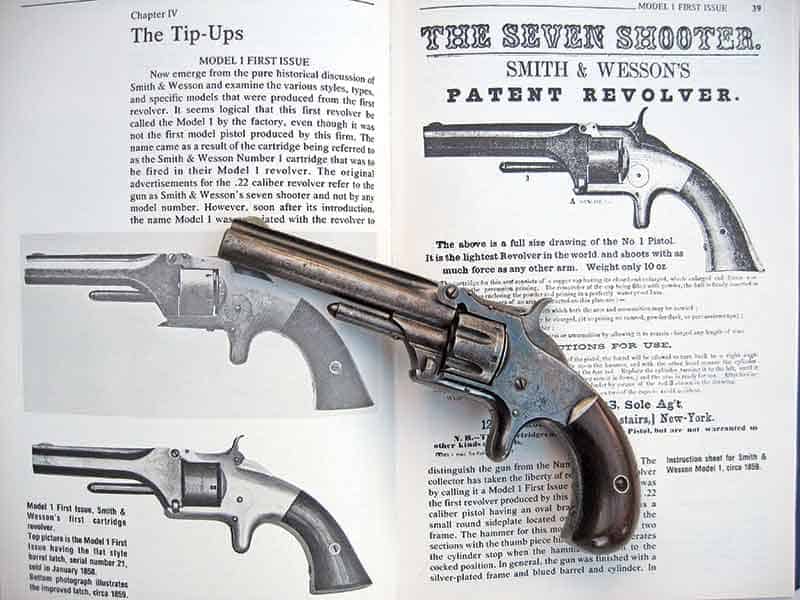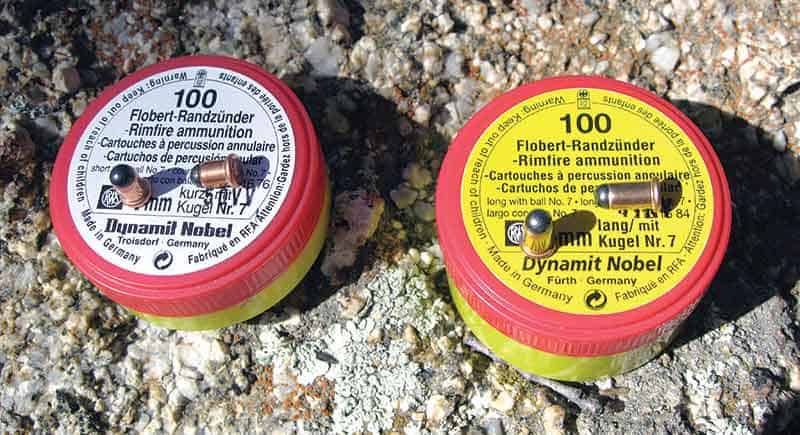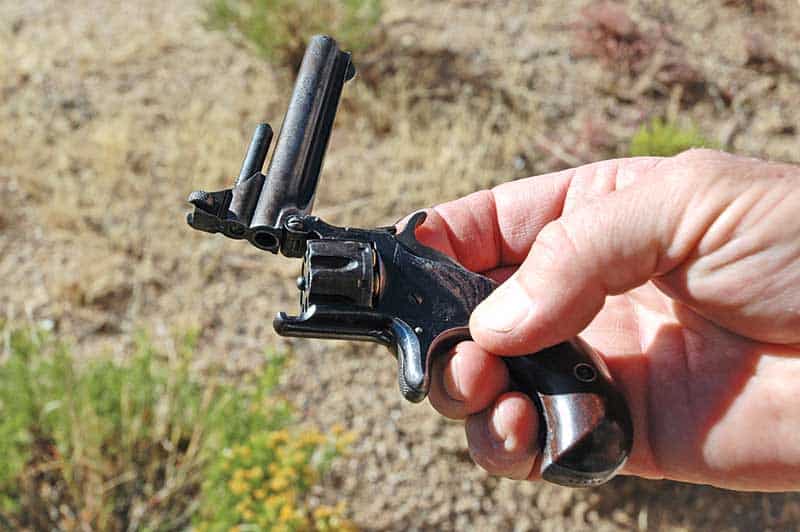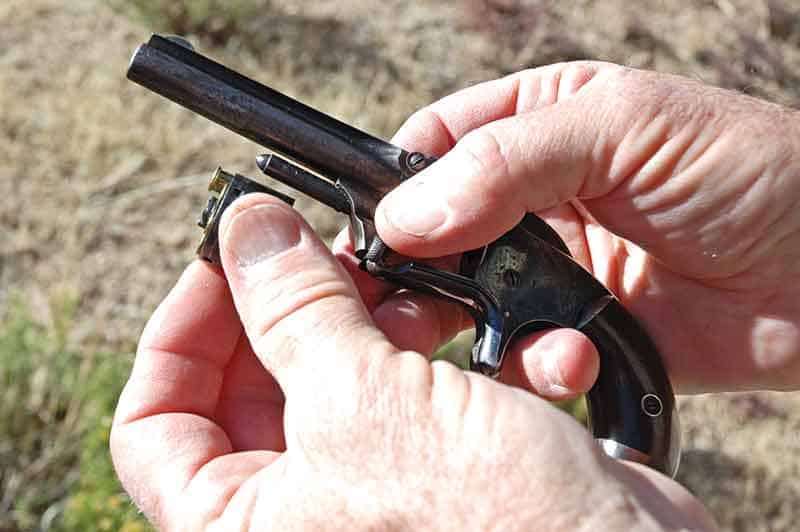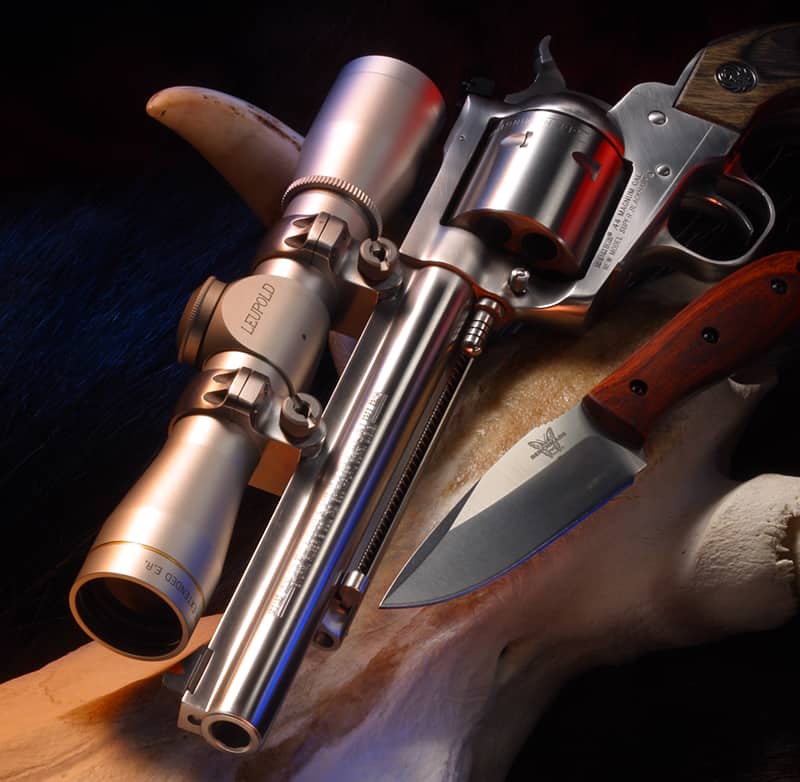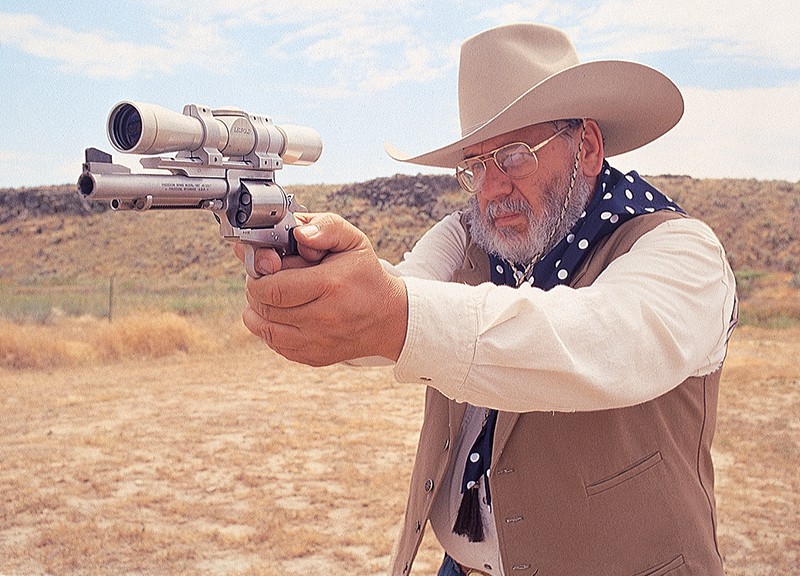The Model 1
Smith & Wesson’s little rimfire
For the millions of rimfire shooters who burn through billions of .22 rimfire cartridges every year, there is a story to be told—the 19th century story of the development of the world’s most popular cartridge which also can claim to be the oldest rimfire and most useful cartridge still in existence. The story revolves around three main players: Louis Nicholas Flobert (1819-1894), Horace Smith (1808-1893) and Daniel Baird Wesson (1825-1906). Each played a significant role in not only the development of the rimfire cartridge but in the design of the firearms that chambered it.
Louis Flobert was a French gunsmith who took the percussion cap, reformed it a bit with a slight rim, added a 5.5 to 6mm round, lead ball to the mouth of the cap and filed a series of patents from 1845 to 1849 that clearly documented the progressive development of his metallic, self-contained cartridges. The percussion cap was the key. Without the Rev. Alexander Forsyth’s earlier work with concussion-fired fulminating compounds and the development of the percussion cap as we know it, Flobert would not have had his cartridge. What the development of the modern metallic cartridge required and what the percussion cap provided was self-contained ignition.
In the Flobert percussion-cap-based cartridge, the priming compound was spread across the inside of the head of the case so Flobert designed smoothbore pistols and rifles that featured a raised rib extending across the face of the hammer—a broad, fixed firing pin so to speak. Since Flobert’s little round balls were propelled only by a priming charge, generating minimum pressure, he relied on the weight of the hammer and the strength of the hammer spring to seal the chamber as the cartridge was fired.
Flobert’s simple firearms, firing low cost ammunition, were a tremendous success in Europe where shooting was much in vogue. Since the combination provided shooters the opportunity to practice their sport indoors, the Flobert pistols were commonly referred to as “parlor or saloon pistols.”
The majority of the Flobert firearms were made in Belgium and production continued right up to the beginning of WWII. They had to have made a jillion of them because I see a Flobert or two at every gun show I attend. Should you own one or buy one, be advised that 4mm and 6mm Flobert ammunition and Flobert components are still being produced by RWS in Germany and sold in the US by International Shooters Service.
Both Horace Smith and Daniel Wesson had broad experience in the New England gunmaking world before becoming partners.
Horace Smith was apprenticed at the Springfield Armory and spent 18 years there before taking a variety of positions with gunmaking firms like Eli Whitney, Allen & Thurber and the Robbins & Lawrence Armory, where Smith was hired to refine the design of the Jennings repeating rifle and the Hunt Rocket Ball self-contained cartridge, predecessors to the Volcanic firearms and ammunition
Daniel Wesson came from a gunmaking family and was apprenticed to his brother, Edwin Wesson, who was known for his highly accurate target rifles and the early development work on a dragoon cap-and-ball pistol. Unfortunately, Edwin died unexpectedly in 1849 and the shop went into receivership a year later. Wesson was then hired by the Robbins & Lawrence to supervise the production of a pepperbox pistol under the watchful eye of shop foreman, Tyler Henry.
Neither the Jennings nor the pepperbox projects were a success, but they did bring Smith and Wesson together, who formed a partnership in 1852 to further develop the Jennings design as a pistol.
At the same time, Daniel Wesson had become intrigued with the Flobert cartridge and is credited with making some single-shot pistols chambered for the Flobert ammunition sometime in the 1851-52 period. In May 1853, Smith and Wesson filed a patent for an improved metallic cartridge that looked exactly like a Flobert. The patent did not cover the cartridge, since Flobert owned those patents, but addressed the method of lubricating the ball and protecting the priming compound.
In 1854, Smith and Wesson sold their interest in their improved Jennings-style firearms and ammunition to the Volcanic Repeating Arms Company, which subsequently went into receivership, only to be bought by Oliver Winchester, renamed the New Haven Repeating Arms Company, and eventually transformed into the Winchester Repeating Arms Company. For a period of time both Smith and Wesson continued to work for the Volcanic Repeating Arms Company.
While doing so, Daniel Wesson developed a prototype revolver for an improved Flobert-type, .22 rimfire cartridge firing a 29-grain bullet propelled by 4 grains of black powder. What distinguished Wesson’s cartridge design from Flobert’s is that the Wesson case featured a distinct rim and the priming compound was spun into that rim and not applied across the inside of the whole case head as Flobert was doing. The Wesson case was truly the first rimfire case, and his design is still with us today.
The year was 1856. Colt’s revolving cylinder patent had just expired, but Wesson needed to load his new metallic cartridge from the rear of the cylinder, and Rollin White, a former Colt employee, owned the patent for a bored-through revolver cylinder. Wesson immediately wrote White and proposed a licensing agreement. White agreed, and in November 1856, Smith and Wesson signed an agreement with White giving Smith and Wesson an exclusive license to manufacture a revolver having a bored-through cylinder with White receiving 25¢ for every revolver produced. The Rollin White patent gave Smith and Wesson a virtual lock on the production of cartridge revolvers until the patent expired in 1872.
With the agreement in hand, Smith and Wesson formed the Smith & Wesson Revolver Factory in Springfield, Mass.
What emerged from the factory 2 years later was the Smith & Wesson Model 1 revolver chambered for the metallic rimfire cartridge we know as the .22 Short. The concept of self-contained metallic cartridge and a revolver to shoot it was revolutionary in 1857. In production from 1857 to 1881, the Model 1 revolver simply made Smith & Wesson.
The Model 1 was a petite 7-shot, single-action revolver weighing a scant 10 ounces. It was an ideal concealed carry handgun and was very popular as such with soldiers during the Civil War. In design, it is commonly referred to as a “tip-up.”
To load the cylinder, you unlatch the barrel at the bottom of the frame and swing it up. The cylinder can now be withdrawn from the frame and loaded. To eject fired cases from the cylinder, you poke them out using the rod seen suspended beneath the barrel.
One of the most interesting mechanical features of the Model 1 is its cylinder stop/bolt. The cylinder stop is a piece of metal on top of the frame. It toggles so as the hammer is cocked, the top of the hammer pushes it up, unlocking the cylinder and permitting the cylinder to rotate. The cylinder stop is spring loaded and immediately allows the bolt to engage the next lock notch.
In collecting circles, the Model 1 is categorized as the Model 1 First Issue (1857-1860), Second Issue (1860-1868) and Third Issue (1868-1881). The models vary in terms of materials, contours, finishes and barrel lengths but are similar in overall functioning. The model pictured in this article is from the Third Issue and is distinguished by its fluted cylinder, birdshead grip and rounded, ribbed barrel.
And that’s the remarkable story of the development of the world’s oldest and most popular rimfire cartridge, the development of a revolutionary revolver to fire it and the personalities that made it happen.
History of Smith & Wesson by Roy G. Jinks (the official S&W historian). Hardcover, 290 pages © 1977. Beinfield Publishing. Out-of-print. Try www.abebooks.com
Smith & Wesson Roy G. Jinks and Sandra Krein. Paperback, 127 pages © 2006, (currently scheduled for reprinting) Arcadia Publishing, 420 Wando Park Blvd., Mount Pleasant, SC 29464, (888) 313-2665, www.arcadiapublishing.com
Standard Catalog of Smith & Wesson: 3rd Edition by Jim Supica and Richard Nahas, Hardcover, 432 pages © 2006, F+W Publications, 700 E. State St., Iola, WI 54990, (800) 258-0929, www.gundigeststore.com
Flobert Supplies
International Shooters Service
2319 E. Loop 820 N., Fort Worth, TX 76118
(817) 595-2090
www.iss-internationalshootersservice.com
